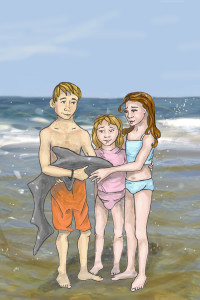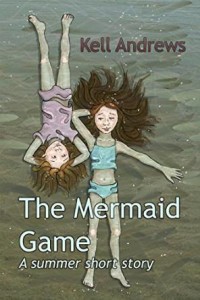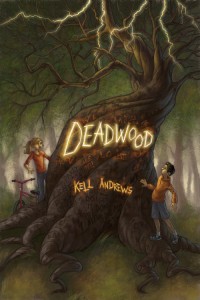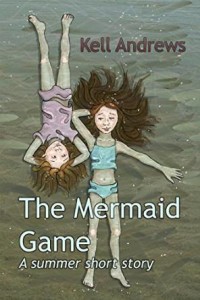
The long and the short:
Character sketch for a chapter-book-
turned-picture-book-turned-
middle-grade story
By the time I was middle-grade age, I wanted to be a writer, but for grownups. It was only as a grownup that I found my voice writing for middle grade. It’s not a coincidence I moved from writing for adults straight past YA to middle grade. Those were the books that made me love reading, and it turned out that I have a middle-grade voice.
Not-blurry middle-grade voice
So what’s middle-grade voice? It’s elusive — one of those “you know it when you see it” things. You know it whether it’s Lemony Snicket’s wry, formal omniscient or Rachel Renee Russell’s effusive, run-on first person. And while the lines might be blurry, middle-grade voice itself never is. It’s clear and succinct — no words wasted, whether lyrical or comedic, prose or verse.
Once you have that voice, it’s a bit persistent.
The long story of a short story
Once I decided to write middle-grade, I wrote two novels. (The second written turned out to be Deadwood, which releases June 24 from Spencer Hill, and the first of which has not yet decided what it will turn out to be). Then I had a great idea for younger story — a chapter book featuring second-graders. The draft was 6,000 words, and I loved it. But I was between agents, and my querying efforts yielded exactly zero agent requests — chapter books are not great agent bait. My single request, actually, was from an editor in an early reader/chapter book imprint who found the voice (third person, whimsical) to be charming but the story too thin for 6,000 words.
I realized that my chapter book wasn’t really a chapter book — it was a picture book. I started with a blank page, chose first person, present tense, changed the age of the characters to first grade, and wrote the story in 850 words. Still loved it — my favorite story that I’d written.
This time when I queried the story as a picture book, I got an agent offer of representation. On the phone, I told her about my middle grade novels too. She said, “I can tell. Your picture book kind of sounds middle grade.”
I chose a different agent and we subbed a different book. But I didn’t forget my favorite story. Eventually I rewrote it featuring third-graders and finally sold it as an early middle-grade short story. Which is what it was meant to be all along.
Middle-grade voice is varied. It isn’t a length or a genre — it managed to assert itself as strongly in my 1,000-word contemporary story as in my 60,000 word fantasy/mystery. And if I ever write for grown-ups again, I’m going to have to hope they’re looking for a little bit of (not-blurry) middle-grade whimsy.
Read the original story on Project Mayhem >>
 Where do stories come from? One of my favorite topics when speaking to readers is where writers get their ideas and how to turn ideas into stories.
Where do stories come from? One of my favorite topics when speaking to readers is where writers get their ideas and how to turn ideas into stories.



